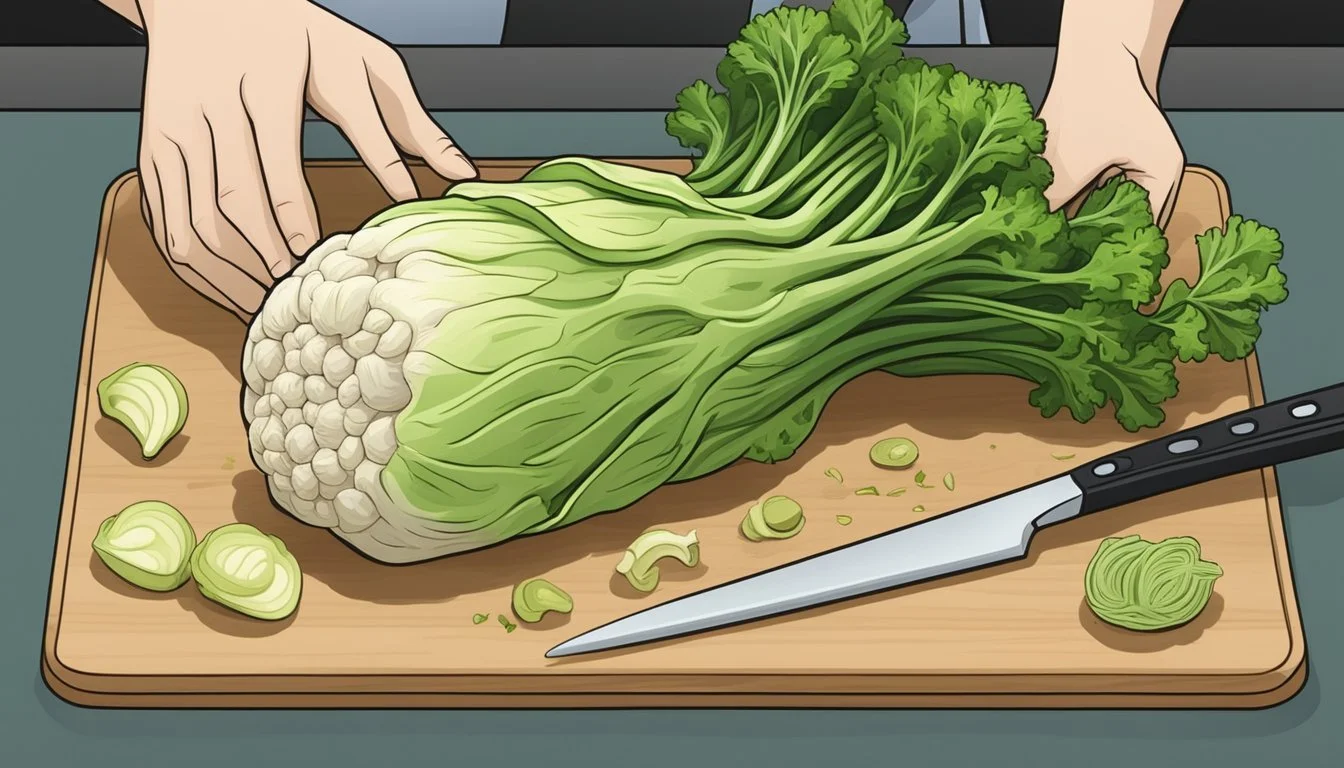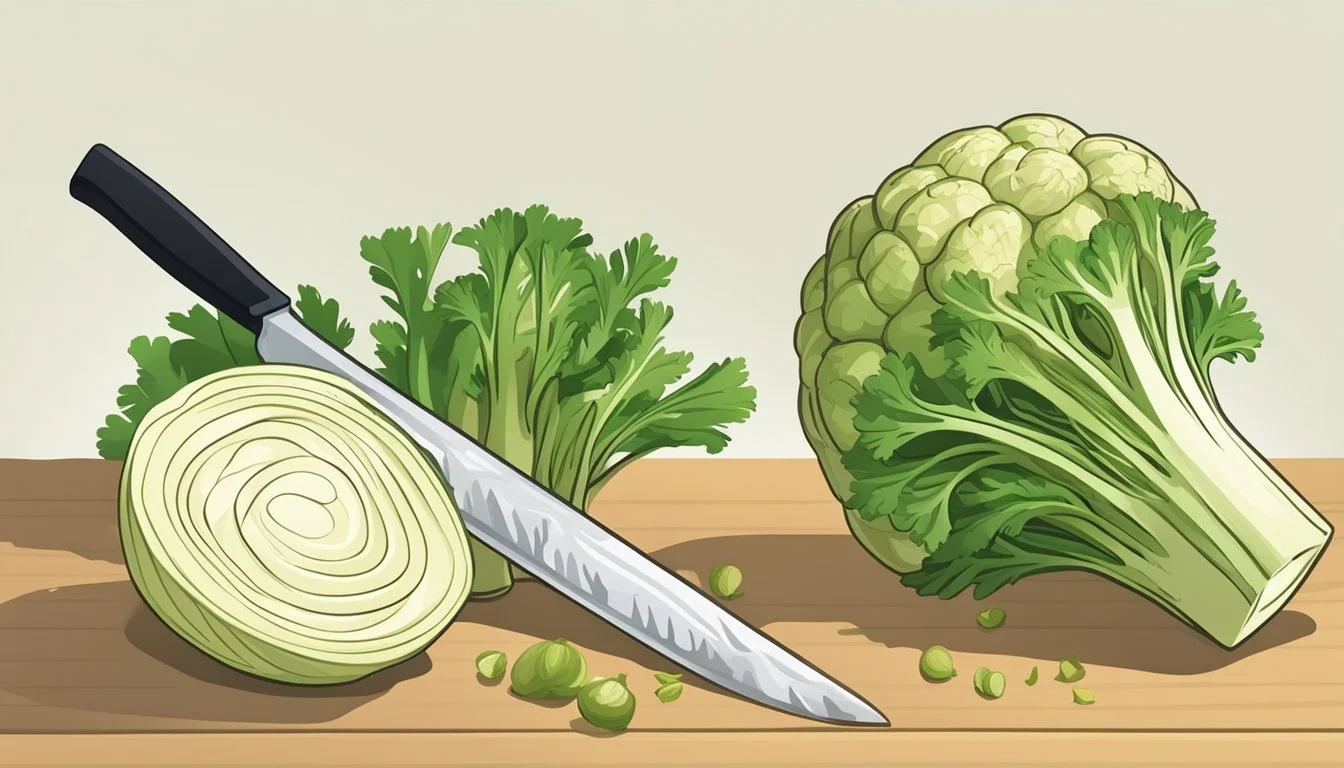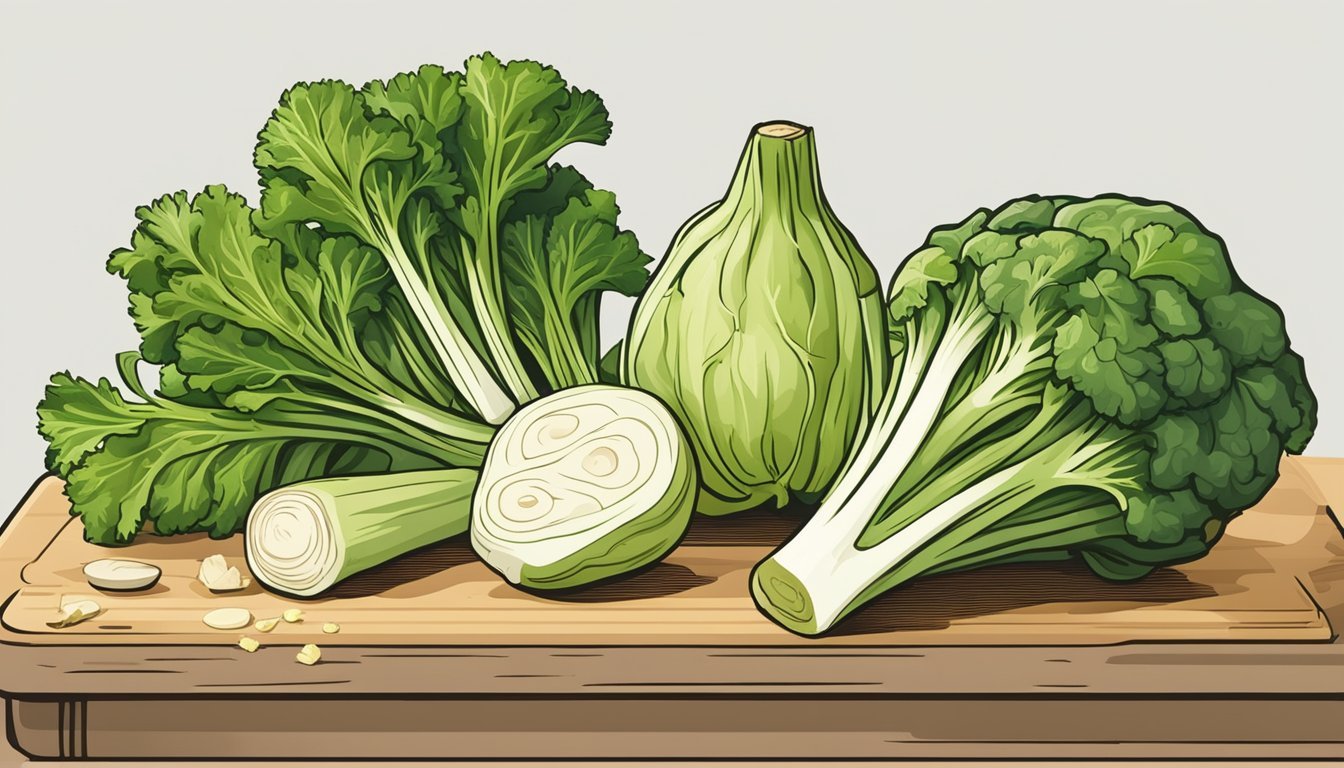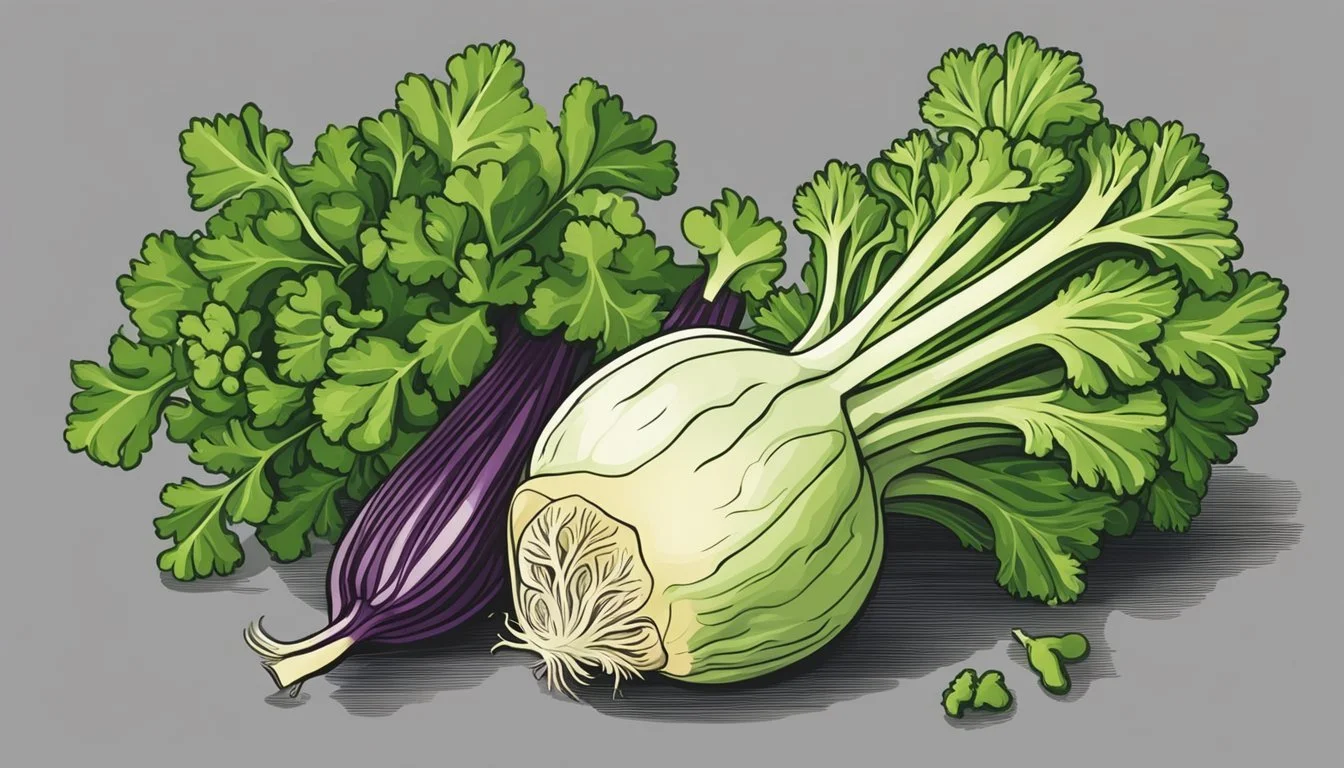How to Substitute Celeriac for Celery
Simple Swap Tips
Celeriac, also known as celery root, is a versatile root vegetable with a flavor profile reminiscent of its close relative, the celery stalk. While celeriac has a distinct taste with a nutty twist, it is often sought after for its ability to replicate the essence of celery in cooked dishes. As a denser, knobbier root, celeriac provides a sturdier texture and a deeper flavor compared to the crisp and refreshing notes of celery, making it an ideal ingredient in a variety of recipes that traditionally rely on celery for a subtle aromatic lift.
Substituting celery with celeriac can prove advantageous, particularly in recipes that require prolonged cooking times where celery might become too soft or lose its vibrant crunch. The robust nature of celeriac allows it to maintain its structural integrity and release a more concentrated celery-like flavor into soups, stews, and roasted vegetable medleys. Additionally, celeriac's adaptability is not limited to cooked preparations; it can be peeled, sliced, or grated into dishes that ordinarily feature raw celery, such as salads or slaws, offering a similar texture with an upgraded taste profile.
The key to successfully substituting celeriac for celery lies in balancing the quantities used and the preparation methods. Considering celeriac's more pronounced flavor, adjustments to the recipe may be required to achieve the desired outcome. They can either complement the other ingredients without overwhelming them or stand out as the star component in the dish, depending on the chef's intention. Knowing how to leverage the unique qualities of celeriac enables culinary enthusiasts to expand their vegetable repertoire with confidence.
Understanding Celeriac
Celeriac, also known as celery root, is a versatile root vegetable closely related to common celery. It is revered for its distinct, earthy flavor which carries nuanced tones that are nutty and mildly sweet. Unlike its stalky cousin, celeriac is cultivated for the large, bulbous root it develops below ground.
The vegetable's rough, knobby exterior might be deceiving, but beneath lies a creamy white flesh that is both firm and moist due to its high water content. The interior texture allows celeriac to absorb flavors well, making it a favored component in a range of dishes.
In culinary use, celeriac proves to be a hearty addition to the kitchen. It can be consumed raw, which showcases its crispness, or it can be cooked, which tends to bring out its more mellow flavors. Here's a quick breakdown of its characteristics:
Flavor Profile:
Earthy
Nutty
Subtly sweet
Texture:
Firm when raw
Tender when cooked
High water content
Celeriac's robust flavor and adaptable texture make it an excellent candidate for various culinary applications, from soups and stews to grated salads and roasted side dishes. Chefs appreciate its ability to enhance a meal's taste profile while contributing nutritional value. With its rise in popularity, celeriac becomes a reliable substitute for conventional root vegetables in the kitchen.
The Role of Celery in Recipes
Celery is a staple in many dishes, playing a significant role due to its distinctive flavor profile and texture contributions. It is often used to enhance the flavor of a dish without overwhelming other ingredients and provides a crunchy texture that is appreciated in a variety of recipes.
Flavor Profile of Celery
Celery has a clean and slightly peppery flavor with hints of earthiness, which makes it a versatile ingredient in cooking. The flavor of celery is subtle yet aromatic, and it can act as a flavor enhancer in many recipes, especially when combined with other foundational ingredients like onions and carrots.
Texture Contributions
The crunchiness of celery stalks is one of their most defining characteristics. Celery's firm and crisp texture is retained even with light cooking, adding a refreshing bite to dishes. This quality makes it particularly popular in raw applications, like in salads, where texture contrast is desired.
Common Uses in Cooking
Celery is commonly found in a variety of cooking applications. Here are some of the ways celery is used:
Soups and Stews: It acts as a part of the "mirepoix" or holy trinity in cooking—a combination of diced celery, onions, and carrots—used as a base for flavor.
Salads: Celery's crunchy texture makes it a refreshing addition to salads.
Aromatics: Its stalks are often used to infuse broths and sauces with flavor.
Snacks and Appetizers: Celery can be served with dips or stuffings, like peanut butter or cream cheese, capitalizing on its firm texture for easy handling.
Substituting Celeriac for Celery
When adapting recipes that call for celery, using celeriac as a substitute requires attention to its distinct flavor and texture. Celeriac, while related to celery, provides a different taste profile and physical structure which can influence the outcome of the dish.
Flavor Compatibility
Celeriac possesses a deeper, earthy flavor compared to the fresh, light taste of celery. They share a botanical kinship that makes celeriac appropriate for recipes requiring a subtle hint of celery. To capture the essence of celery:
Soups and stews: Replace celery with celeriac at a 1:1 ratio.
Raw applications: Celeriac's stronger taste may be too intense, so it's advisable to use less celeriac than you would celery or pair it with acidic ingredients like lemon juice to balance the flavor.
Texture Considerations
Celery provides a crisp, fibrous texture, which can be somewhat replicated by the root vegetable celeriac. However:
Cooked dishes: Both celery and celeriac soften with cooking, making them interchangeable.
Raw dishes: Celeriac is denser and less crunchy, so it might not provide the same textural contrast as celery.
Note on preparation: Peel celeriac thoroughly to remove the tough outer skin, which is not present in celery stalks.
Proportion and Prep
Celeriac tends to be larger than a bunch of celery, and accordingly, one should adjust proportions. For cooking purposes:
Recipe Calls For: Substitute With: Prep Note: 1 stalk of celery 1/3 cup diced celeriac Peel and dice celeriac. 1 cup chopped celery 1 cup chopped celeriac Keep celeriac chunk size similar to celery for consistent cooking.
Always begin with a smaller amount of celeriac to gauge its impact on the overall dish, increasing as desired according to taste and textural preferences.
Adapting Recipes for Celeriac
When substituting celeriac for celery in recipes, it is essential to understand the difference in flavor and texture between these two vegetables. Celeriac imparts a subtle earthy taste and has a firmer texture when compared to the crunchy and fresh flavor profile of celery.
Converting Measurements
The first step in adapting a recipe is to accurately convert the measurements. As celeriac is denser than celery, one typically uses one cup of peeled and chopped celeriac to replace two cups of chopped celery. This maintains the balance of flavors without overpowering the dish.
Adjusting Cooking Times
Celeriac generally requires more cooking time than celery. To achieve a soft texture similar to cooked celery:
Roasting: Increase cooking time by approximately 10-15 minutes.
Boiling: Extend the boiling time until celeriac is tender, typically 20-30 minutes.
Sautéing: Cook celeriac for 7-10 minutes before adding ingredients that cook faster.
Seasoning Adjustments
While celery contributes a distinct flavor to dishes, celeriac's taste is more subdued and can pair well with a variety of seasonings. When using celeriac:
Decrease salt: Celeriac's natural flavors are enhanced with less salt.
Herbs: Use parsley, thyme, or tarragon to complement its earthiness.
Acids: A squeeze of lemon juice can brighten celeriac dishes just as it does for celery.
By carefully converting measurements, adjusting cooking times, and fine-tuning seasonings, one can successfully integrate celeriac into a recipe traditionally calling for celery.
Complementary Vegetables and Herbs
When substituting celeriac for celery, one enhances the dish with a blend of compatible vegetables and herbs. These combinations ensure balanced flavors and textures within a recipe.
Harmonious Vegetable Pairings
The fibrous texture of celeriac (celery root) pairs well with a variety of vegetables, creating a medley of flavors and consistencies. Parsnips, with their sweet, earthy taste, mirror the profile of celeriac and can be used in cohesive dishes such as soups and stews. A trio of potatoes, carrots, and celeriac creates a classic blend, perfect for root vegetable gratins or mashes. Leeks and onions offer a gentle pungency, acting as aromatic backbones that complement the subtle sweetness of celeriac.
Parsnip: For a similar sweetness with a nutty edge
Potato: Adds a creamy texture and neutral backdrop
Carrots: Introduce a vibrant color and an additional layer of sweetness
Leeks: Their mellowness brings out celeriac's nutty flavors
Onions: Provide a foundational flavor that enhances earthy notes
Herbs That Enhance Celeriac
While vegetables set the stage, herbs are pivotal in fine-tuning the final flavor of a dish involving celeriac. Parsley imparts a fresh note, magnifying celeriac's innate flavors. The licorice-like undertones of fennel bulb or fennel seeds accentuate celeriac's subtle sweetness. For a more pronounced herby dimension, a cook can integrate parsley root due to its vibrant, slightly peppery taste that complements the nuances of celeriac well.
Parsley: Adds brightness and complements celeriac's light earthiness
Fennel Bulb: Its anise-like quality enhances celeriac's sweetness
Parsley Root: Brings a robust yet refined flavor profile
Considerations for Dietary Restrictions
When substituting celeriac for celery, individuals with dietary restrictions should consider gluten-free and vegan options, as well as low-carb and keto-friendly alternatives. The following subsections provide specific recommendations to accommodate these dietary needs.
Gluten-Free and Vegan Options
Celeriac itself is naturally gluten-free and vegan, making it an excellent celery substitute for individuals adhering to these diets. However, one should be cautious when using processed substitutes like celery seed or celery salt, as they may contain additives that are not gluten-free or vegan. It is advisable to check the labels for certification or to opt for whole food substitutes to ensure compliance with dietary restrictions.
Gluten-Free Substitutes:
Fresh celeriac (unprocessed)
Parsnip**
Jicama (eaten raw for salads)
Vegan Substitutes:
All the above gluten-free options
Celery seed (ensure no animal-derived additives)
**Parsnip can be an excellent gluten-free substitute, but one should verify that it has not been processed in a facility that also processes gluten-containing products to avoid cross-contamination.
Low-Carb and Keto Alternatives
For those following a low-carb or ketogenic diet, the carbohydrate content in the substitute is a critical factor. Celeriac, while lower in carbs than some root vegetables, may still be higher than desired for a strict keto diet. Therefore, individuals should consider alternatives with a lower carbohydrate profile.
Low-Carb Alternatives:
Celery itself (higher in water content and lower in carbs)
Celery seeds (used sparingly as they are concentrated in flavor)
Keto Alternatives:
Celery stalks and leaves (comprise high water content and minimal carbs)
Herbs like parsley or celery seed can be used for flavor without significant carb addition
In any case, seasoning with salt and pepper remains a straightforward way to enhance flavor for any diet without adding carbs.
Storing and Preserving Celeriac
Celeriac, also known as celery root, is a versatile vegetable that can act as a flavorful substitute in a variety of dishes. Ensuring proper storage and preservation can maintain its freshness and extend its utility in your culinary endeavors.
Optimal Storage Conditions
To maximize the longevity of celeriac, it should be stored in refrigerator conditions at a temperature range between 32-40°F (0-4°C). Placing the root vegetable in a perforated plastic bag within the vegetable crisper allows for necessary air circulation. Typically, celeriac retains its quality for 3 to 5 days when stored under these conditions.
Preservation Techniques
When considering longer-term preservation of celeriac, the following methods are effective:
Blanching: Prior to freezing, celeriac can be blanched to help retain its texture, color, and flavor. The process involves boiling the root vegetable for several minutes followed by an ice bath.
Freezing: Post-blanching, the celeriac can be frozen. This halts deterioration and allows for extended storage.
Cellaring: In a cool, humid environment, celeriac can be stored for several months. This traditional method is akin to how other root vegetables are kept during winter months.
Using celery seeds or celery salt are alternatives that don't require preservation but can impart a similar flavor in dishes that traditionally use celeriac.
Creative Culinary Inspirations
When substituting celeriac for celery, chefs can explore a range of applications that elevate classic dishes and introduce new flavor dimensions to inventive pairings and dishes.
Reinventing Classics
In classic recipes where celery is a fundamental element, such as stews, casseroles, and soups, celeriac steps in seamlessly with its earthy and nuanced profile. A potato soup, for instance, gains a level of sophistication with celeriac's subtle celery-like flavor and creamy texture when transformed into a mash.
Mashes: Replace traditional mashed potatoes with a celeriac mash, using a mix of butter, cream, and seasoning to highlight celeriac’s unique taste.
Stews: Incorporate diced celeriac into beef or vegetable stews to add a rooty depth.
Casseroles: Layer thin slices of celeriac in place of potatoes or mix it into the base for an aromatic twist.
Innovative Pairings and Dishes
Celeriac brings a refreshing change to the table with its adaptability in both raw and cooked forms. The chefs can slice it thin for salads, lending a fresh crunch that pairs well with apples and nuts, or dice it for textural contrast in hearty recipes.
Salads: Combine julienned celeriac with carrots and dress with a mustard vinaigrette to create a vibrant slaw.
Recipes: Experiment with celeriac in lieu of celery in remoulade or as a base for flavorful vegetarian patties, enhancing the dishes with its distinct flavor and versatility.
By incorporating celeriac as a substitute in these inspired ways, culinary enthusiasts can enjoy the familiar comfort of traditional dishes alongside the excitement of new and interesting flavors.









